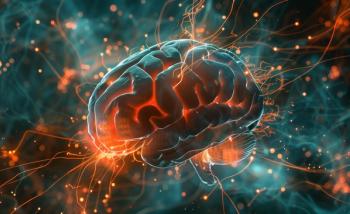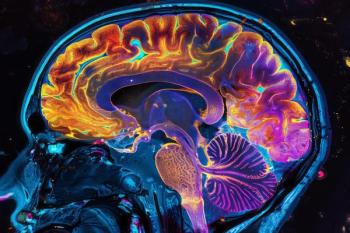
DSM-V and Pain
Unless you have been living on a desert island for the past 2 years, you are well aware that the development of DSM-V is well under way.
Unless you have been living on a desert island for the past 2 years, you are well aware that the development of DSM-V is well under way. Unfortunately, to a great degree, because of certain decisions by the American Psychiatric Association, you probably don’t have much more knowledge about how DSM-V will differ from its predecessors than if you were still marooned on that island. I don’t have any more information about what is under consideration for inclusion than anyone else--unless you are one of the DSM-V work group members. How this reflects on the process concerns me.
I chaired the committee on Pain Disorder for DSM-IV and DSM-IV-TR and was a member of the work group on Psychiatric Systems Interface Disorders (PSID), which covered a variety of conditions including the somatoform disorders. The process under which we worked appears to be unlike that of DSM-V.
Because DSM-IV was expected to be markedly different from its predecessors, work group members were encouraged not only to solicit ideas from others but to offer for critique what diagnostic criteria and descriptors were being considered for inclusion.
One of first things I did after becoming involved in the development of DSM-IV was to contact anyone who had knowledge of how decisions were made regarding how pain was dealt with in DSM-III and DSM-III-TR. As far as I could decipher, there had been no single person or persons with special interest in pain involved in the writing of those 2 editions, but I discussed it with as many colleagues as I could to determine who had had input into the pain diagnoses. I also contacted experts on pain taxonomy throughout the world to ask for their recommendations as to what changes should be made.
In contrast, I have never heard from anyone involved with DSM-V. I don’t know whether this was a conscious decision to clearly differentiate it from its predecessors or something more accidental. I viewed the new DSM-IV pain disorder diagnosis not as the final statement of psychiatry on pain but as a hoped for beginning recognition of the importance of this subject on which DSM-V would build. However, those involved in DSM-V don’t seem to have much interest in what went before.
Over the years I have heard and read a number of criticisms of DSM-IV pain disorder. Some have questioned whether there needs to be any diagnosis in DSM to deal with pain. Others have criticized its requirement that judgments be made regarding the contributions of psychological factors and general medical conditions to the pain. Many have felt that it didn’t allow a sufficient level of detail in the diagnosis. However, at no time during the process of writing DSM-IV or DSM-IV-TR did anyone suggest a practical alternative, nor have I heard or read of any such alternative since that time.
I have found that one frequent source of criticism stems from the inclusion of pain disorder as one of the Somatoform Disorders. Both DSM-IV and DSM-IV-TR clearly state that “The common feature of the Somatoform Disorders is the presence of physical symptoms that suggest a general medical condition. . . and are not fully explained by a general medical condition.” 1,2 (DSM-IV p 445; DSM-IV-TR p 485). However, this has often been misinterpreted to mean that there can be no general medical condition present for the diagnosis of a somatoform disorder to be made. The diagnosis of pain disorder associated with both psychological factors and a general medical condition clearly contradicts this. The fact that Somatoform Disorders also included the diagnoses of somatization disorder, conversion disorder, and hypochondrosis in which the symptoms are totally ascribed to psychological issues has no doubt added to the confusion. For DSM-IV, I sought to have pain disorder separated from the other Somatoform Disorders, and for it to be handled as a separate problem (as with the sleep disorders) to avoid this problem.
I believe that a specific diagnosis that addresses pain needs to be included in DSM and that, unlike DSM-III psychogenic pain disorder or DSM-III-R somatoform pain disorder, it needs to address the potential for the interplay of psychological and physical factors.
I consider the addition of the diagnosis of pain disorder associated with both psychological factors and a general medical condition to be the most significant improvement over DSM-III and DSM-III-R, which essentially divided pain secondary to psychological issues from pain secondary to general medical conditions. I was in favor of DSM-IV providing for further subcategories to enable coding of whether the psychological factors were related to another diagnosable mental disorder. However, the Task Force that made the final decisions about what would be included decided not to go into this degree of detail at that time. I still believe that providing for this additional categorization would be very useful.
There are 2 other issues that fell under the purview of other work groups that I sought to have addressed in DSM-IV and that I believe still need to be altered in DSM-V. The first issue is iatrogenic opioid abuse and dependence that can result from prescription of these drugs for a legitimate pain complaint. I argued for inclusion in DSM-IV of a category to differentiate these problems from those that stem from the illicit or recreational use of opioids. The Substance-Related Disorders Group responded that it had been informed by “experts” that iatrogenic opioid abuse did not exist, even though I and many other pain specialists frequently saw it in our practices.
Perhaps now that most of those who previously denied the existence of iatrogenic abuse and dependence accept its authenticity, it will be included in DSM-V. This would enable practitioners to make these diagnoses without fearing that they will damage the lives of patients by suggesting they were engaging in nefarious activities rather than suffering from recognized adverse-effects of opioids. It would also allow researchers to be able to track these patients to determine the differences between these forms of substance abuse.
The second issue is about what I have always considered an inexplicable inconsistency in DSM-IV. Under the pain disorder diagnosis, it is noted that there is “pain disorder associated with a general medical condition” but that this is not considered a mental disorder. According to DSM-IV, however, if pain occurs in the genitalia during intercourse, it is a diagnosable mental disorder--even if the pain is secondary to a general medical condition. To me this harkens back to a Freudian view of illness with the body eschewed in the rest of DSM.
References:
References
1. American Psychiatric Association. Diagnostic and Statistical Manual of Mental Disorders, 4th Edition (DSM-IV). Washington, DC: American Psychiatric Association; 1994.
2. American Psychiatric Association. Diagnostic and Statistical Manual of Mental Disorders, 4th Edition Text Revision (DSM-IV-TR). Washington, DC: American Psychiatric Association; 2000.
Newsletter
Receive trusted psychiatric news, expert analysis, and clinical insights — subscribe today to support your practice and your patients.

















